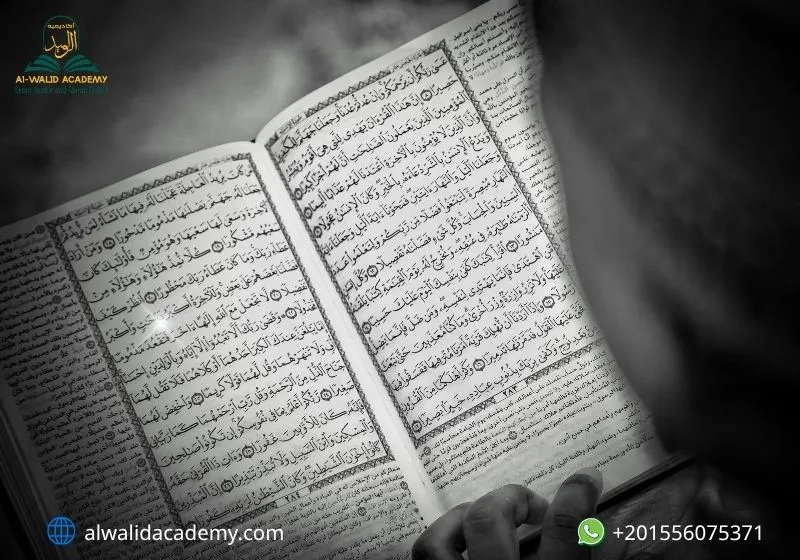Have you ever paused while reading the Quran, unsure whether to continue or stop?”Quran Stop Signs” are the key that will help you understand these symbols and read correctly with clear meaning.
Quran Stop Signs (Waqf)
When you open the Quran, you’ve probably noticed small symbols above or after some words – like (م), (ج), (لا), (قلى), and others.
These aren’t just decorations — they’re called Quran Stop Signs (Waqf), and their purpose is to guide you on where to pause and where to continue while reciting.
These symbols were designed with great precision by scholars of Tajweed to help you read the Quran exactly as it was revealed — with the right meaning, pronunciation, and flow.
Once you understand these signs, your recitation becomes calmer, your understanding deeper, and your voice more beautiful and confident.
With our Quran Courses Online, you’re not just learning the signs — you’re connecting every stop, every word, and every meaning with the heart of the Quran itself.
What does “Waqf” mean in the Quran?
Linguistically, “waqf” means “to stop,” but in Quranic recitation, it has a deeper meaning.
Waqf is when a reciter stops their voice at a specific word — not because the recitation is finished, but to continue afterward in the proper way.
You might pause for a breath, or because the meaning of the verse needs a short stop — then continue from the same spot or the next word.
It’s not about interrupting your reading, but about stopping at the right place so the meaning stays clear and complete.
To master where and how to stop in your tilawah, join our Tajweed Course — it’s designed to teach the fine details of Quran pronunciation and proper pauses.
Why Quran Stop Signs matter
Stopping in the wrong place can completely change the meaning of an ayah!
For example, if you stop at a word that makes the sentence incomplete or changes its meaning — like saying “There is no god…” and then pausing — the message becomes distorted.
That’s why these signs are there: to preserve the meaning and make the recitation smooth and correct.
From a Tajweed perspective, proper stops also affect how you pronounce words — like when to change a tanween or a final vowel sound. Without these rules, you might mispronounce or distort a word.
If you’re learning how to pause and continue correctly while reciting, our Quran Recitation Course will help you apply these stop signs naturally in your reading.
Types of Quran Stop Signs (Waqf Symbols)
There are several types of stop signs in the Quran, and each one gives a different instruction to the reader:
1. م (Mandatory Stop)
This means you must stop here, because if you continue, the meaning may change or become confusing. The stop here is obligatory.
2. ج (Permissible Stop)
You can either stop or continue here — the meaning stays correct in both cases. It’s up to the reader’s choice and breath.
3. لا (Do Not Stop)
This one’s clear — don’t stop here, because the sentence or meaning isn’t complete yet. Stopping here might cause misunderstanding.
4. قلى (Preferred to Stop)
It’s better to pause here for clarity, but continuing isn’t wrong either.
5. صلي (Preferred to Continue)
Opposite to the previous one — it’s better to continue reading, but if you stop, the meaning won’t be distorted.
6. س (Brief Pause or Saktah)
A rare symbol that means you should make a very short pause without taking a breath — used only in specific Quranic positions.
Adults who want to strengthen their reading fluency and understand Quranic rhythm can benefit from our Quran Classes for Adults online.

Core Waqf Symbols
While reading the Qur’an, you’ve probably noticed some small letters above or beside certain words — like (م, ج, ط, لا, صلي, قلي).
These are called Quran stop symbols (Waqf signs), and they’re an essential part of Tajweed.
They’re not just decorations — they act like clear traffic signs that guide you where to pause and where to continue, so the meaning of each verse stays accurate and beautiful.
Let’s get to know the most common Waqf symbols in the Mushaf, what each one means, and why every single one is placed exactly where it is.
In our Quran Memorization Course, we make sure students not only memorize verses but also understand every waqf sign to recite with meaning and beauty.
The Main Meanings of Waqf Symbols: م, ج, ط, لا, صلي, قلي
Let’s go through these symbols one by one in a simple and easy way :
1. م (Meem – Mandatory Stop)
The symbol (م) means you must stop here. If you continue reading without stopping, the meaning might change or become confusing.
Stopping at this mark keeps the verse’s meaning clear and complete — it separates one thought from another.
When you see (م), pause briefly, reflect on what you just recited, and then continue with focus.
2. ج (Jeem – Permissible Stop)
The symbol (ج) means optional stop — you can either pause or keep going, and the meaning won’t change.
It’s often used in longer verses to give the reader some breathing flexibility without affecting the message.
3. ط (Taa – Complete or Natural Stop)
(ط) marks the end of a complete meaning — a natural place to stop before moving to a new idea.
Pausing here helps make your recitation smoother and more rhythmic, especially at the end of sentences.
Stopping at (ط) gives your recitation a nice, calm flow that listeners enjoy.
4. لا (La – Do Not Stop)
This one’s important — (لا) literally means “don’t stop here.” The sentence or verse isn’t complete yet, and stopping could distort the meaning.
Some people pause at (لا) just to take a breath, but that can change the meaning completely. Always continue reading until the thought ends.
5. صلي (Sili – Prefer to Continue)
The symbol (صلي), or sometimes written as (ص) or (ز), means it’s better to continue reading without stopping.
Stopping isn’t forbidden, but continuing keeps the meaning more connected and fluent.
Think of it like a smooth line — the more you keep going, the clearer the meaning becomes.
6. قلي (Qili – Prefer to Stop)
(قلي) is the opposite — it means it’s better to stop here.
Pausing usually clarifies the meaning more, though continuing is still fine if the context allows it.
Example: You’ll find it where two related phrases appear together, and stopping after the first one helps you understand the message more clearly.
Understanding the meaning behind each stop sign gets even deeper when you take our Learn Quran Tafseer Online class — where tajweed meets tafseer.
Read about: Overcoming Challenges in Quran Memorization
Embracing Stops (∴__ ∴) – Mu’anaqah
Sometimes, you’ll notice two or three dots above two close words written like this (∴ __ ∴).
That’s called Mu’anaqah, or “embracing stops.” It means you should stop at one of them only, not both.
If you stop at both, it can break the meaning or disconnect the verse’s flow. Choose one place to pause, and continue smoothly from the next.
If Arabic isn’t your first language, our Learning Arabic for Beginners will help you recognize Quranic words and apply stop signs correctly.
Read about: How to Understand the Quran Word by Word
Brief Pause (س / Saktah) – A Short Pause Without Breath
The symbol (س) or the word Saktah means a very short silent pause — without taking a breath.
It’s like a tiny moment of silence where your voice stops but your recitation continues.
This type of pause helps in pronunciation or clarifies the difference between similar-sounding words.
Try practicing this pause while listening to famous reciters like Al-Husary or Al-Minshawi — you’ll start noticing it easily.
In the Online Noorani Qaida Course, students learn how letters connect and where natural pauses occur — a perfect foundation before studying waqf rules.
Sajdah Mark (Prostration Symbol)
In some parts of the Qur’an, you’ll find a small mark next to a verse indicating a place of prostration (Sajdah) — often written beside it.
This isn’t a Waqf sign but rather a sign of Quranic etiquette, showing that the verse invites you to bow down in prostration if you’re reciting.
It reminds you that Quran recitation isn’t just reading — it’s worship. Bowing at that moment expresses humility and submission to Allah’s words.
Learn Quran, Arabic, and Islamic Studies with certified teachers in fun, interactive, and personalized sessions. Join thousands of students around the world and begin your path today!
Detailed Rules by Symbol

In this part, we’ll go through each Quran stop sign in detail — what it means, why it’s there, and how to use it while reciting.
The goal isn’t just to know where to stop, but also why you stop — so your recitation stays correct, clear, and meaningful, exactly as it was revealed.
-
Mandatory Stop (م)
The symbol (م) stands for a mandatory stop, meaning you must pause here and shouldn’t continue reading right away.
If you keep reading without stopping, the meaning could change or sound confusing.
These spots usually come where a full sentence ends or a new idea begins — so stopping helps separate the two meanings clearly.
Think of it like a signal that says: “Pause here, take a breath, and start fresh.”
-
Permissible Stop (ج)
The symbol (ج) means a permissible stop — you can pause here or continue, and the meaning won’t really be affected either way.
It’s often found in verses where two ideas are connected, but not tightly enough to cause confusion if you pause.
So, if you need a short break, you can stop here; if you’d rather keep going, that’s fine too. This sign gives you flexibility without changing the intended meaning.
-
Preferred to Continue (صلي / ز)
The symbols (صلي) or sometimes (ز) mean it’s better to continue reading without stopping.
The meaning that follows usually completes the one before it, so stopping might make the verse sound incomplete.
In these cases, continuing makes your recitation smoother and the meaning clearer.
But if you really need to pause, it’s allowed — it just sounds more natural to keep going.
-
Preferred to Stop (قلي)
The symbol (قلي) means it’s preferable to pause here, though it’s not required.
Stopping helps make the meaning clearer, but continuing won’t cause a mistake either.
These usually appear where a thought or phrase comes to a natural break.
Pausing here lets you reflect and understand better before moving on.
-
Do Not Stop (لا)
The symbol (لا) means do not stop here unless you absolutely have to.
Pausing here can break the meaning or leave the sentence incomplete because the words that follow complete the idea.
A common mistake is stopping at “لا” thinking it’s a normal pause — but it’s not.
If you ever have to stop here (for breath, for example), start again from a word or two before the sign to keep the meaning correct.
-
Natural Stop (ط)
The symbol (ط) represents a natural or complete stop, where the idea or sentence has clearly ended.
This is not only allowed but also recommended — because the meaning is complete and clear.
You’ll often find it at the end of a statement or verse. Stopping here gives your recitation a nice rhythm and helps you take in the meaning before continuing.
learn more about: Quran Classes in Birmingham
Applying Waqf Correctly
Stopping while reciting the Qur’an isn’t just a pause — it’s an art that shows how deeply the reciter understands the meanings of the verses.
Every stop sign in the Qur’an carries a purpose, and using them properly makes your recitation more meaningful and spiritually powerful.
After a waqf (stop), comes ibtida’ (resumption), which determines where and how to continue reading.
Sometimes you resume from the same word, other times from before or after it, depending on the meaning and the structure of the verse.
The main goal is to keep the meaning consistent, without breaking the flow or confusing the context.
Through the Modern Standard Arabic program, you’ll develop a strong command of classical Arabic that helps in understanding Quranic pauses and structures.
Waqf vs. Ibtida’: The Difference Between Stopping and Starting
Many readers think waqf (stopping) and ibtida’ (starting) are the same, but in reality, they’re two sides of one process.
Waqf marks where you pause to complete or clarify meaning, while ibtida’ determines where you resume to continue that meaning smoothly.
If you make a mistake in either, the verse’s message can become unclear. Understanding both ensures your recitation conveys the Qur’an’s intended meaning properly.
| Aspect | Waqf (Stop) | Ibtida’ (Resumption) |
| Definition | Temporary pause during recitation to clarify or complete meaning | The point where the reciter resumes after a stop |
| Purpose | To continue the meaning seamlessly without distortion | To highlight meanings and organize the recitation |
| Duration | A short pause, usually without a long breath | A new start after taking a normal breath |
| Position | At the end of a phrase or at a stop sign | After the stop, based on context |
| Common Mistake | Stopping in the middle of an idea or before completing meaning | Starting from a place that changes or distorts the meaning |
| Effect of Mistake | Disrupts meaning or changes interpretation | Makes the recitation sound disconnected or unclear |
Practical Examples from Short Surahs
Let’s take a look at some short examples from the Qur’an to understand how these rules apply in real recitation.
- In Surah Al-Ikhlas, for example, when reading “Allahu As-Samad م”, the letter mim indicates a mandatory stop because the sentence is complete. If you continue without pausing, the next phrase “Lam yalid wa lam yūlad” could merge incorrectly, changing the meaning.
- In Surah Al-Falaq, you might find symbols like ط or ج at the end of a verse. These show that stopping here is preferable since the idea has concluded.
The more you practice such examples from your personal Mushaf, the more naturally you’ll recognize where to pause and where to continue smoothly.
Common Mistakes in Stopping and Ibtida’
Even skilled readers sometimes make mistakes when applying waqf and ibtida’. Here are the most frequent ones and how to avoid them for a clearer, more accurate recitation:
-
Stopping at “لا” unnecessarily
The sign “لا” means do not stop. Stopping here changes or distorts the meaning. If you must pause, go back slightly and resume from a suitable word before the sign.
-
Ignoring the embraced stop (∴)
Some readers pause at both sides of the symbol or skip it entirely, breaking the rhythm and connection. You should stop at one side only, whichever fits the meaning better.
-
Changing the vowel marks when stopping
For example, tanwin turns into sukoon when stopping, and if the reader doesn’t know this rule, pronunciation and meaning may be affected. Learning the rules of stopping and vowel transformation is essential.
-
Starting from the wrong place after a stop
Some readers resume from a word that doesn’t connect properly to the previous part, making the verse sound incomplete. Choose a starting point that continues the idea naturally.
-
Relying on only one Mushaf version
Different Qur’an prints use slightly different symbols and colors for stop signs. Limiting yourself to one copy can cause confusion.
It’s better to compare a few reliable editions, especially those approved by your academy or teacher.
Learn more about: Tajweed Mistakes
How Stop Signs Differ Across Mushafs
Not all Mushafs use the same stop symbols or place them in identical spots.
Some editions use color-coded symbols to make it easier for readers, while others include additional notations such as “Stop of the Prophet”, “Stop of Forgiveness”, or “Stop of Reflection”.
These variations come from different scholarly interpretations and schools of tajwid.
Even the script design can make a difference — font size, symbol placement, or visibility can affect how easily a reader notices the signs. That’s why choosing a reliable, standardized Mushaf is essential.
Academies and Qur’an teachers should ensure that all students learn from the same version, so their recitation style remains unified and precise.
Learning Path and Resources – Step-by-Step Drills for Beginners
If you’ve always wanted to learn the art of waqf and ibtidaa (stopping and starting in Quran recitation), this step-by-step plan will guide you smoothly from the basics to mastery.
Stage 1: Theoretical Foundation
Start by memorizing the main Quran stop symbols — (م, ج, ط, لا, صلي, قلي, س) — and what each one means.
Then review the basic rules of stopping and how vowel marks change when you stop, such as tanween, fathah, and the tied Taa (ة).
Stage 2: Slow and Focused Reading
Choose one page or verse and read it slowly. Try to identify where you should stop, then compare with the stop marks in the Quran and notice the difference when you stop or continue reading.
Stage 3: Paired Stop Practice (∴)
Practice the paired stop sign ∴ by trying to pause at the first mark once, then at the second the next time.
Notice which option makes the meaning clearer or the recitation smoother.
Stage 4: Record and Review
Record yourself while reciting. Then listen to your recording to check whether you stopped correctly or missed any signs — adjust your recitation accordingly.
Stage 5: Daily Practice
Make waqf and ibtidaa practice part of your daily Quran reading or memorization.
Each session, focus on one or two stop symbols and apply them consciously.
Stage 6: Unified Mushaf for Study
If you’re learning in a Quran academy or with a teacher, use the same mushaf (Quran copy) that highlights stop marks clearly. This helps standardize reading and avoids confusion among students.
Learn more about: How to Learn Quran with Tajweed at Home
Advanced Notes: Grammar, Meaning, and Types of Waqf
As you advance, you’ll learn that some stops are related to grammar and meaning:
- Grammatical stop: Some pauses occur at grammatical connectors like apposition or conjunctions. Stopping there may disrupt the structure.
- Complete stop (Waqf Kafi): The meaning is complete but still slightly related to the next phrase.
- Good stop (Waqf Hasan): The stop gives an acceptable meaning, but continuing is stylistically stronger.
- Bad stop (Waqf Qabeeh): Stopping here breaks the meaning and should be avoided except for necessity or breathing.
The Quranic Arabic Course gives you the tools to understand how grammar and meaning affect where you stop in recitation.
Changes in Vowel Marks When Stopping
When you stop during recitation, some vowels and endings change:
- Tanween usually turns into a sukoon (except for double fathah, which may become an alif).
- Taa marbouta (ة) is pronounced as “Haa” (ه) when stopping.
- Letters with stable vowels (like sukoon, alif, or waw) remain unchanged.
Context and Meaning Analysis
Waqf isn’t just about rules — it’s also about understanding meaning.
Sometimes the correct stop depends on the context of the verse and how ideas connect across ayahs.
A good stop helps deliver the intended message of the Quran beautifully.
Differences Between Readings (Qira’at)
In some Quranic readings, like Warsh or Hafs, stop positions or marks may differ slightly.
That’s why it’s important to follow the stop signs used in the version you’re studying and learn the distinctions between them.
Downloadable Cheat Sheet: Quran Stop Signs at a Glance
To make practice easier for students, you can prepare a short Cheat Sheet (PDF or image) that includes:
- The main stop signs and their meanings (م, ج, ط, لا, صلي, قلي, ∴, س)
- Example pages from the Quran showing stop and continuation positions
- Quick notes about vowel changes when stopping
- Beginner practice steps
- A comparison table between waqf (stopping) and ibtidaa (starting).
Learn with Al-Walid Academy
At Al-Walid Academy, we don’t just focus on memorizing the Quran — we teach meaningful recitation.
Our goal is to help you read the Quran correctly, understand where to stop and continue, and grasp the meaning behind every verse you recite.
If you’re searching for a clear and practical explanation of Quran Stop Signs, this guide is made just for you — simple, structured, and easy to apply while you read.
Why Choose Al-Walid Academy?
- Step-by-step explanations: From the basic symbols to advanced stop rules.
- Practical application: Every lesson includes live recitations and real examples.
- Personal voice correction: We review your recordings and show you exactly where to stop or resume.
- Unified, clearly marked Mushaf: So everyone reads the same way without confusion.
- Downloadable cheat sheet (PDF): Includes all the main stop signs with their meanings and examples.
- Weekly follow-up sessions: To make sure you’re progressing, not just listening.
That why we are the Best Online Quran Classes in USA
Learn with Al-Walid Academy
At Al-Walid Academy, we don’t just focus on memorizing the Quran — we teach meaningful recitation.
Our goal is to help you read the Quran correctly, understand where to stop and continue, and grasp the meaning behind every verse you recite.
If you’re searching for a clear and practical explanation of Quran Stop Signs, this guide is made just for you — simple, structured, and easy to apply while you read.
Why Choose Al-Walid Academy?
- Step-by-step explanations: From the basic symbols to advanced stop rules.
- Practical application: Every lesson includes live recitations and real examples.
- Personal voice correction: We review your recordings and show you exactly where to stop or resume.
- Unified, clearly marked Mushaf: So everyone reads the same way without confusion.
- Downloadable cheat sheet (PDF): Includes all the main stop signs with their meanings and examples.
- Weekly follow-up sessions: To make sure you’re progressing, not just listening.
If you’ve ever wondered “Where should I stop?” or “How do I continue the right way?”, this is your moment to learn.
Join Al-Walid Academy today and master Quran Stop Signs with ease — so you can recite confidently, beautifully, and with full understanding.
Click Register Now or send us a message on WhatsApp — your spot is waiting in the next batch.
Learn Quran, Arabic, and Islamic Studies with certified teachers in fun, interactive, and personalized sessions. Join thousands of students around the world and begin your path today!
FAQs
What do Quran Stop Signs mean?
They’re small symbols in the Quran that tell you where to stop or continue while reciting, so your reading stays correct and the meaning doesn’t get distorted.
Why are stop signs important in recitation?
Because stopping in the wrong place can completely change the meaning of an ayah or make it unclear. These signs help you recite properly and keep the flow natural.
How many types of stop signs are there in the Quran?
There are several — the most common ones are: م (M), ج (J), ط (T), لا (La), صلي (Sili), قلي (Qili), and س (S), which means “a short pause.”
Can I stop anywhere even if there’s no sign?
Not really. If there’s no sign, it’s better to keep reading so you don’t break the meaning — unless you really need to pause to catch your breath.
Do the vowel marks change when I stop?
Yes, sometimes! Tanween turns into a sukoon, and the tied “taa marbouta” (ة) is pronounced as “haa” (ه) when you stop. Other letters usually stay the same.
Are the stop signs the same in all Qurans and recitations?
Not always — there might be small differences between Qurans or recitations, but they all serve the same goal: keeping your recitation meaningful and accurate.
How can I practice using stop signs?
Start with a short passage every day, focus on two or three signs, record yourself reading, then listen and correct. You’ll improve quickly with daily practice.





